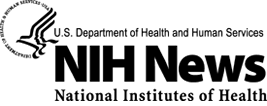Last updated: February 14, 2014
NIH uses genome sequencing to help quell bacterial outbreak in Clinical Center

National Human Genome Research Institute
www.genome.gov
NIH Clinical Center
clinicalcenter.nih.gov
NIH uses genome sequencing to help quell bacterial outbreak in Clinical Center
Genomics and microbiology experts collaborate in hospital infection control
 |
Bethesda, Md., Wed., Aug. 22, 2012 - For six months last year, a deadly outbreak of antibiotic-resistant bacteria kept infection-control specialists at the National Institutes of Health's (NIH) Clinical Center in a state of high alert. A New York City patient carrying a multi-drug resistant strain of Klebsiella pneumoniae, a microbe frequently associated with hospital-borne infections, introduced the dangerous bacteria into the 243-bed research hospital while participating in a clinical study in the summer of 2011.
Despite enhanced infection-control practices, including patient isolation, the K. pneumoniae began to spread to other Clinical Center patients at the alarming rate of one a week, ultimately colonizing 17 patients, of whom 11 died - six from infection and five from their underlying disease while infected.
To get the outbreak under control, Clinical Center staff collaborated with investigators at the National Human Genome Research Institute (NHGRI), also part of NIH, to use genome sequencing in the middle of this active hospital epidemic to learn how the microbe spread. A report in the Aug. 22, 2012, early online edition of Science Translational Medicine describes how that collaboration helped quell the outbreak.
"Infectious outbreaks happen in every hospital in the world, afflicting millions of patients each year in the United States alone," said NHGRI Director Eric D. Green, M.D., Ph.D. "By marshaling the ability to sequence bacterial genomes in real time to accurately trace the bacteria as it spread among our Clinical Center patients, our researchers successfully elucidated what happened, which in turn has taught us some important lessons. This study gives us a glimpse of how genomic technologies will alter our approach to microbial epidemics in the future."
The outbreak began in June 2011 when a New York City hospital transferred a seriously ill 43-year-old woman to NIH. The admitting nurse noted that the patient's medical history included multiple-drug resistant infections, leading Clinical Center staff to put her in isolation immediately and institute a number of other restrictions. Despite these measures, immune-suppressed patients elsewhere in the hospital began to develop K. pneumoniae infections, but the Clinical Center staff could not determine whether the same strain of bacteria carried by the New Yorker caused the new infections.
"For decades, we used pulsed-field gel electrophoresis to differentiate bacterial strains," said Tara N. Palmore, M.D., the NIH Clinical Center's deputy hospital epidemiologist who led the outbreak investigation. This test produces a barcode-like pattern of bacterial DNA that shows whether strains are genetically similar. In K. pneumoniae, however, 70 percent of the strains in the United States belong to one strain type with one pattern. "This test is not very helpful for that organism," she said.
 |
As the outbreak began, the Clinical Center staff teamed up with NHGRI researchers led by Julie Segre, Ph.D., an NHGRI senior investigator. Dr. Segre had been working with the Clinical Center's Clinical Microbiology Department to study the evolution of bacterial antibiotic resistance when she heard about the outbreak.
"We were already trying to develop clinical molecular diagnostics tools," Dr. Segre said. "We thought we could use genome sequencing to tell whether the K. pneumoniae from the first patient was the same strain as the one that infected the second patient."
The hospital team sent samples of bacteria isolated from infected patients to the NIH Intramural Sequencing Center (NISC), a component NHGRI. NISC sequenced the DNA samples, and Dr. Segre's team analyzed the results. Where the pulse-field gel electrophoresis technique shows relatively crude patterns, genome sequence data shows precise differences, down to single genetic letters in the bacterial genome. This sequencing proved that the strain of K. pneumoniae sickening all the patients in the Clinical Center originated with the patient from New York; that is, the outbreak had a single source.
"Genomic data can identify unexpected modes of transmission," Dr. Segre said. "Though the transmission path is difficult to detect, the genomic data is indisputable."
When combined with the traditional epidemiology tracking data, the genome sequence results showed that Patient 1 transmitted the bacteria to other patients on two separate occasions from infections on different parts of her body, creating two major clusters of infected patients.
Even as the epidemiologic and genomic investigation proceeded, the infection-control team in the NIH Clinical Center employed increasingly intensive strategies to stop the infection from spreading. For example, they used a vapor of hydrogen peroxide to sanitize rooms and removed sinks and drains where K. pneumoniae had been detected. They also limited the activities of hospital staff and the use of equipment exposed to infected patients so the microbe could not spread to uninfected patients.
In addition, the NIH doctors treated the first patient's infection with colistin, an older, toxic antibiotic considered a drug of last resort. Fortunately, the treatment worked and the patient recovered.
The infection-control interventions proved successful, and by the end of the year, no new cases arose in the Clinical Center, stemming the outbreak.
"Genome sequencing and analysis is our best hope for anticipating and outpacing the pathogenic evolution of infectious agents," said Dr. Segre. "Though our practice of genomics did not change the way patients were treated in this outbreak, it did change the way the hospital practiced infection control."
"This study makes it clear that genome sequencing, as it becomes more affordable and rapid, will become a critical tool for healthcare epidemiology in the future," said David Henderson, M.D., NIH Clinical Center deputy director for clinical care and associate director for quality assurance and hospital epidemiology. His team is preparing a paper that will outline the use of genome sequencing within the methodology of infection control for similar outbreaks. "Now that we know what genome sequencing can do," he said. "I anticipate this methodology will be rapidly adopted by the hospital epidemiology community."
Over one million healthcare-associated infections (HAIs) occur across the spectrum of healthcare each year; in hospitals alone, the Centers for Disease Control and Prevention estimates that one in 20 hospitalized patients has a HAI. These infections can be life threatening and also add to our growing health care costs, accounting for billions of dollars in excess health expenditures each year. Multi-drug resistant K. pneumoniae is among the more dreaded infections because few effective treatments exist and it has a mortality rate of 40 percent.
NHGRI is one of the 27 institutes and centers at the National Institutes of Health. The NHGRI Division of Intramural Research develops and implements technology to understand, diagnose and treat genomic and genetic diseases. Additional information about NHGRI can be found at its website, www.genome.gov.
The NIH Clinical Center (CC) is the research hospital of the National Institutes of Health. Through clinical research, clinical investigators translate laboratory discoveries into better treatments, therapies and interventions to improve the nation's health. For more information, visit clinicalcenter.nih.gov,
The National Institutes of Health, the nation's medical research agency, comprises 27 institutes and centers and is a component of the U.S. Department of Health and Human Services. NIH is the primary federal agency conducting and supporting basic, clinical, and translational medical research, and is investigating the causes, treatments, and cures for both common and rare diseases. For more information about NIH and its programs, visit www.nih.gov.
Contact:
Raymond MacDougall
National Human Genome Research Institute
301-402-0911
macdougallr@mail.nih.gov
Maggie McGuire
NIH Clinical Center
301-594-5789
mcguirema@mail.nih.gov
Last Updated: February 14, 2014
